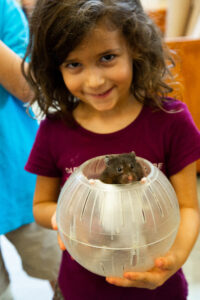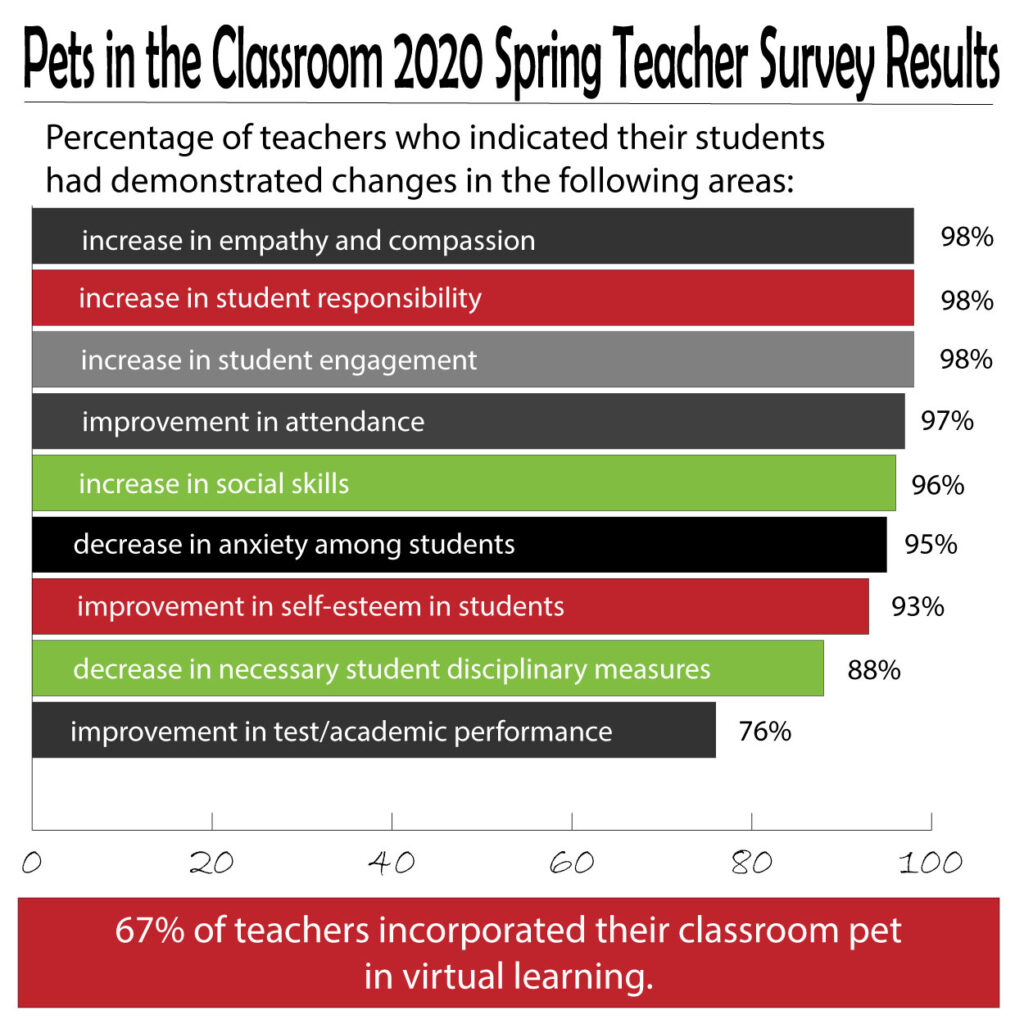If you are just learning about the Pets in the Classroom grant program, or even if you are already familiar with us, we want to share with you more about who we are, what we do, and why our program is so important.
About Pets in the Classroom:
 The Pets in the Classroom grant program was established by the Pet Care Trust in 2011 with the purpose of providing financial support to teachers to purchase and maintain small animals in the classroom. The program was started with the knowledge that classroom pets can be a valuable teaching tool that many teachers do not have access to because of a lack of funding. Through the program, teachers can get an initial grant to help with the cost of purchasing a small animal pet and its supplies, and then a sustaining grant each subsequent school year to help with the continued cost of feeding and caring for the pet.
The Pets in the Classroom grant program was established by the Pet Care Trust in 2011 with the purpose of providing financial support to teachers to purchase and maintain small animals in the classroom. The program was started with the knowledge that classroom pets can be a valuable teaching tool that many teachers do not have access to because of a lack of funding. Through the program, teachers can get an initial grant to help with the cost of purchasing a small animal pet and its supplies, and then a sustaining grant each subsequent school year to help with the continued cost of feeding and caring for the pet.
Why Should Teachers Have Classroom Pets?
Interacting with classroom pets is an experience that can shape the lives of children for years to come. The stories teachers share with us show it, and research confirms it.
Research:
- In 2019, Phase II of the American Humane Research Study on pets in the classroom was published in the Human Animal Interaction Research Bulletin. In the study, teachers with classroom pets reported significantly greater increases in overall social skills (including communication, cooperation, assertion, responsibility, empathy, engagement, and self-control); better social competence; and improved academic reading competence. Parent respondents indicated they saw significantly greater increases in pro-social behaviors among their children compared to parents with children in classrooms without pets.
Amy McCullogh, PhD, Principal Investigator and Senior Research Advisor with American Humane stated: “The utilization of classroom pets in the 3rd and 4th grade U.S. classrooms appears to hold significant benefits for children’s social, behavioral and academic development.”
Learn more about this study and it’s 1st phase on our Research page.
- An article published by EdSource Magazine discusses how classroom pets impact students by teaching social and emotional skills, such as self-awareness, self-management, responsibility and relationship building. The article, “With increased focus on students’ social and emotional skills, teachers turn to class pets to help lead the way,” showcases classroom activities around classroom pets and the impact they have on the students.
- An article published by TIME Magazine discusses how scientific studies are showing the value of animals for improving health and well-being. The article, “Science Says Your Pet Is Good for Your Mental Health,” reviews some of the studies and the various effects different animals had on people. From rabbits helping reduce anxiety, to fish helping with focus, to guinea pigs helping with socializing, the article provides great insight into the impact animals can have in the classroom.
Teacher Survey:
One of the overarching ways we see the success of the program is through our annual teacher survey in which we survey grant recipients on their classroom pet experience. The survey gives us valuable insight into how teachers are using pets, both in the classroom and in remote learning, and the multitude of ways that students are benefiting from them. The graphic below shows the results of the 2019-20 school year survey.

You can read the full results of the survey (as well as some wonderful testimonials) by visiting: Teachers Share the Impact of Classroom Pets in 2019-20 School Year.
Teacher Testimonials:
We regularly receive emails, letters, and messages from teachers sharing with us the impact their classroom pet has had on the students. The stories are heartwarming and real, and we love sharing them with you on Facebook, Instagram, Twitter, Pinterest, and our blog. Here are just a few:
I have quite a few students in foster care or in a children’s home. They look forward to the week when they get to have fish duty and take extreme pride in being able to call them their own. Many of them have introduced our class fish to their guardians as “their pet” or “our class family pet.” It’s very humbling to know that our fish are one of the only forms of stability in their lives.
I purchased a leopard gecko for my classroom pet and there were so many students who got over their fear of reptiles because of our pet. They would make outfits for our gecko and were always talking about him like he was another student. Their confidence and curiously rose after Irwin was introduced to our classroom.
Boris, our Russian Tortoise is a calming member of the classroom. Very active boys will sit, stay still and watch Boris eat his lettuce. Boris is encouraging students to focus, pay attention and care for another living thing daily.
Erni, our bearded dragon, has helped students cope with the changes brought by distance learning. Her picture greets them when they log into Google Classroom. I’ve also had her hanging out with me during some class Zooms, and I’ve shared additional videos and photos of her with the students. She helps things feel a little more normal for them.
The Impact of Pets in the Classroom:
From the program’s inception in 2011 through the 2019-20 school year, over 171,000 grants have been issued to teachers, meaning nearly 7 million students have experienced the joys of interacting with and caring for pets as a result of receiving a Pets in the Classroom grant. About 49% of our grants go to Title 1 schools and 44% go to classrooms serving students with disabilities. Looking forward, the program strives to continue educating the public on the benefits of pet care while providing grants to teachers so they can impact the lives of millions more children across the United States and Canada.
How Can You Support Pets in the Classroom?
Now that you’ve read more about the program, the benefits of pet care, and the ways students are benefiting, we’d like to share a few ways you can help us support teachers through Pets in the Classroom.
- Share our program with your teacher friends!
- Follow us on social media and share the impact that classroom pets can have!
- Donate to the program! We would not exist without donations from supporters: https://petsintheclassroom.org/donate/
- Sponsor a teacher: If you know of a specific teacher or school that you would like to provide with a classroom pet, we would like to assist you in making that possible: https://petsintheclassroom.org/sponsor-a-classroom/
- Create a Facebook Fundraiser with Pets in the Classroom as the recipient. Here’s how: https://www.facebook.com/help/356680401435429
In addition to providing grants, Pets in the Classroom strives to be a resource for teachers who have or are interested in classroom pets. Visit our website to learn more: www.dbf9eaf4ed.nxcli.io.




